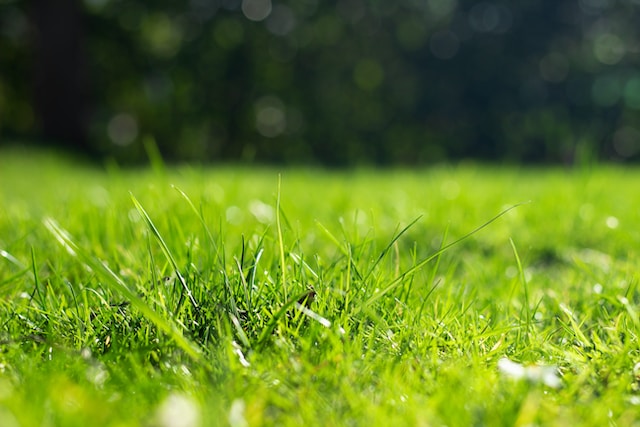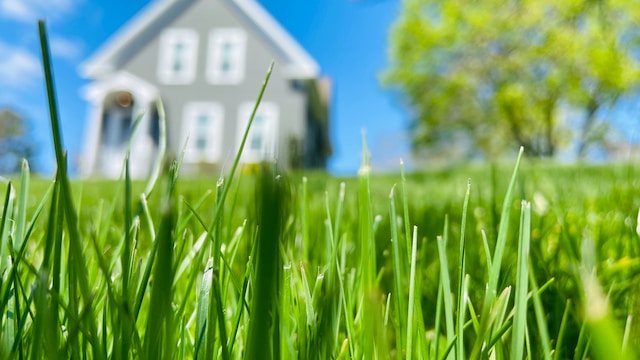A lush, green lawn can transform any outdoor space into a vibrant oasis, enhancing the overall beauty of your home. Achieving a better quality lawn, however, requires more than just regular mowing and watering. It involves a combination of proper maintenance, strategic planning, and a touch of passion for gardening.
In this article, we will delve into three essential tips that can help you achieve a better quality lawn that will make your neighbors envious and your outdoor experience more enjoyable.
Soil Health: The Foundation of a Luscious Lawn
The key to a thriving lawn lies beneath the surface: the soil. Before diving into fertilizers and lawn care routines, it is vital to assess and improve your soil’s health. Conduct a soil test to determine its pH level and nutrient content. This information will guide you in selecting the appropriate fertilizers and soil amendments. If the pH level is off-balance, making it either too acidic or too alkaline, your grass will struggle to absorb essential nutrients, no matter how much you fertilize. Based on the test results, you can add lime to raise the pH or sulfur to lower it.
Enhancing soil structure is equally important. Compacted soil restricts root growth and water absorption, leading to a weak lawn. Aerate the soil at least once a year, particularly in high-traffic areas, to alleviate compaction and promote better oxygen circulation. For organic lawns, consider incorporating natural soil amendments such as compost, which not only improves soil structure but also enhances its nutrient-holding capacity. Compost helps foster a healthy soil ecosystem by promoting beneficial microbial activity, which aids in nutrient breakdown and availability for the grass.
Additionally, mulching grass clippings instead of bagging them can further enrich the soil with organic matter and nutrients, contributing to the overall health and sustainability of your luscious lawn. If you’re dealing with particularly compacted soil and want to expedite the process, you may also consider to buy grass plugs to introduce new, healthy grass roots into your lawn.
Watering Wisely: The Key to Efficient Lawn Care
Watering your lawn may seem like a straightforward task, but it requires a strategic approach to ensure optimal growth without wasting water. One common mistake is overwatering, which not only depletes a precious resource but also promotes shallow root growth. Instead of frequent shallow watering, aim for deep, infrequent watering sessions. Deep watering encourages grass roots to grow deeper into the soil, making them more resilient to drought conditions and reducing the need for constant irrigation.
To achieve efficient watering, invest in a smart irrigation system that considers local weather conditions and adjusts watering schedules accordingly. Consider watering your lawn in the early morning or late afternoon when the sun’s intensity is lower, minimizing water loss due to evaporation. Avoid watering during the hottest parts of the day to prevent scorching the grass. Additionally, make sure to adjust your watering practices based on the season; your lawn’s water needs will vary during different times of the year.
Mowing Techniques: Cutting for Healthy Growth
Mowing your lawn is not just about maintaining a neat appearance; it significantly impacts the health and growth of your grass. Avoid the temptation to cut your grass too short, as this weakens the plants and encourages weed growth. Different grass types have specific height requirements, so it’s essential to know the ideal height for your lawn and adjust your mower accordingly. As a general rule of thumb, never remove more than one-third of the grass blade’s length in a single mowing session.
Frequent mowing is crucial, especially during periods of active growth. However, never mow a wet lawn as this can lead to uneven cuts and harm the grass. Keep your mower blades sharp to ensure clean cuts, preventing grass fraying and disease entry points. Consider changing your mowing pattern regularly to avoid compacting the soil in the same areas repeatedly. Alternating the mowing direction will also encourage grass blades to grow upright, giving your lawn a polished and manicured look.
Weed and Pest Management: Keeping Invaders at Bay
Maintaining a weed-free lawn is essential for achieving better quality turf. Weeds not only compete with your grass for essential nutrients and water but also detract from the overall appearance of your lawn. Regularly inspect your lawn for any signs of weed infestations and take prompt action to address them. For small weed patches, hand-pulling can be effective, but for larger infestations, consider using herbicides. Opt for selective herbicides that target specific weed species without harming your grass. Always follow the manufacturer’s instructions and safety guidelines when using herbicides to protect yourself, your lawn, and the environment.
Pests can wreak havoc on your lawn, causing irreparable damage if not dealt with swiftly. Common lawn pests include grubs, chinch bugs, and armyworms. Regularly inspect your lawn for signs of pest activity, such as brown patches, wilting grass, or unusual holes in the ground. Applying beneficial nematodes can help control grub populations without harming beneficial insects. For larger infestations, insecticides designed for specific pests can be used. Alternatively, consider using natural remedies like neem oil or insecticidal soap to minimize the impact on beneficial insects.

Fertilization: Feeding Your Lawn the Right Way
Proper fertilization is crucial for a healthy and vibrant lawn. Grass requires essential nutrients like nitrogen, phosphorus, and potassium to thrive. Conduct a soil test to determine your lawn’s nutrient needs, and choose a high-quality fertilizer with the right balance of nutrients. Organic fertilizers are an excellent choice as they release nutrients slowly, providing a steady supply of nourishment to your lawn over time. Avoid excessive fertilization, as this can lead to excessive growth and weak, disease-prone grass. Follow the recommended application rates and schedules to ensure the best results.
Consider using a technique called “grasscycling” to recycle nutrients back into your lawn. Grasscycling involves leaving the grass clippings on the lawn after mowing, allowing them to decompose and release valuable nutrients back into the soil. This practice not only reduces the need for fertilizers but also improves soil health. When grasscycling, make sure to mow regularly and at the right height to avoid clumps of clippings that could smother the grass.
Seasonal Lawn Care: Tailoring Your Approach
Your lawn’s needs change with the seasons, and adjusting your lawn care routine accordingly is vital for achieving the best results. During the warmer months, focus on proper watering and pest control to protect your lawn from heat stress and insect damage. Regular mowing and weed management are also essential during this time. In the fall, prepare your lawn for winter by aerating and overseeding to promote strong root growth. Applying a winter fertilizer will help your grass survive the cold months and emerge healthier in the spring.
In colder regions, winter lawn care involves protecting your lawn from harsh winter conditions. Avoid walking on frosted or frozen grass, as this can cause damage to the delicate blades. Use sand or cat litter to create paths for foot traffic across the lawn during winter. Additionally, clear any debris, such as leaves and branches, from the lawn regularly, as these can smother the grass and encourage disease development. By tailoring your lawn care approach to each season’s unique demands, you can ensure your lawn remains vibrant and healthy year-round.
Achieving a better-quality lawn requires a holistic approach that encompasses soil health, watering practices, mowing techniques, weed and pest management, fertilization, and seasonal care. By investing time and effort into understanding your lawn’s unique needs and tailoring your care routine accordingly, you can create a lush, vibrant, and healthy lawn that becomes the envy of your neighborhood. Remember to be patient and consistent in your efforts, as a stunning lawn is a labor of love that pays off with the beauty and enjoyment it brings to your outdoor space.







